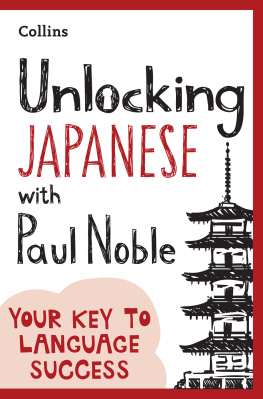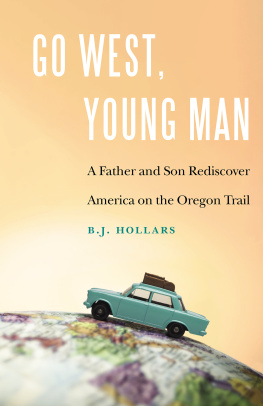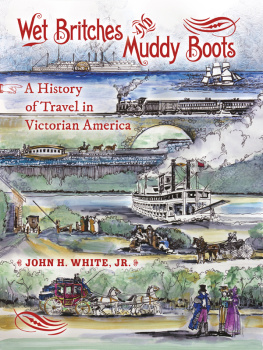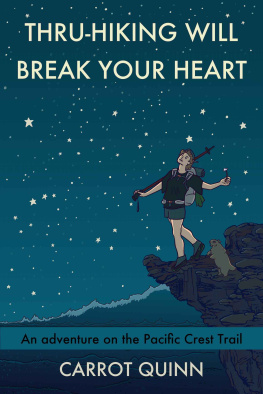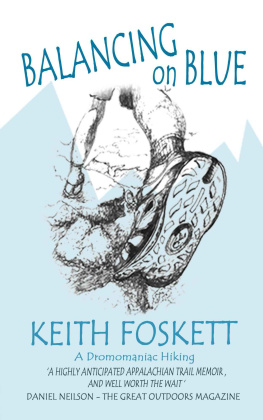1. A New Story
2. Five Thousand Miles of Unknowns
3. The Road Chosen
4. The Emerald Triangle
5. Danny
6. Caples Lake Caper
7. Middlegate Station
8. The Peace Train
9. Long Night in Utah
10. Colorful Colorado
11. Heroes and Friends
12. Choices on the Road toward Home
13. Biking the Bible Belt
14. Kudzu, Cotton Fields, and Canines
15. Front Porches and Diners
16. One Way
17. Its about Time
1
A New Story

T his was not how things were supposed to happen. The Cape Trail was meant for walkers, not riders. But I was a bikerat least, I intended to beand somehow it just didnt seem right to start a cross-country bicycle ride without the bike. So I lugged my bicycle down a trail that led through a cedar forest to the very edge of our country. In some places the trail was a pleasant stroll down a woodland path, sometimes boardwalks crossed damp and swampy areas, and the path often climbed or descended. I pushed my bike along the narrow and bumpy boardwalk, tugged it up and down wooden steps, and lifted it over roots and rocks.
My journey would not begin or end according to the usual traditions of cross-country rides. Most adventurers back a tire into one ocean, then pedal across the continent until they finally splash into the opposite sea. Here, at my starting point, the surf swirled far below the high cliffs where the observation platform jutted out over the waters. My tires would not be washed by Pacific waves today. And instead of taking the usual three-thousand-mile route from the Pacific to the Atlantic, my bike and I would have to cover almost five thousand miles. I had searched for the two farthest points in the continental United States and was determined to make the trip from one corner to the other.
I was familiar with the southernmost corner of America. My wife, Mary, and I had visited Key West, Florida, years before, and I relished a return trip there. The northwestern corner, where my journey would begin, was a town I had never heard of: Neah Bay, on the edge of the Olympic Peninsula in Washington. Several miles west of this town, the three-quarter-mile Cape Trail led through wetlands and cedar trees to the geographical northwestern corner of the contiguous United States, a dramatic overlook on the cliffs facing the Pacific Ocean.
So my bike would travel with me down this trail to the starting point for my new adventure.
Bob walked the trail with me. He lived in the Seattle area and had heard through a friend about the ride I had planned. When he offered to pick me up at the airport and transport me and my bike to my starting point, I gladly accepted. Although Id never met Bob before, his assistance in launching my adventure proved extremely helpful.
At the terminus of the trail, we took in the stunning views from the observation platform high above the ocean. Huge rock formations stood offshore, sculpted into odd shapes by the powerful sea; dark indentations in the cliffs were sea caves that had been hollowed out by incessant waves. This was my first glimpse of the dramatic scenery that awaited me all along the northwest coastline.
Bob and I both snapped photos. It was a beautiful place, but my mind was on the reason I had come. I backed my bicycle up to the very edge of a sheer cliff, the very edge of America, and Bobs camera documented the start of my journey. Now my time had come to depart for Key West, Florida, the opposite corner of our country, only five thousand miles away.
When we returned to the small parking area at the trailhead, I strapped on my bike panniers and Bob took a few more pictures. Then I started pedaling.
The day was Saturday, July 10.

Nothing about the start of my ride was how it was all supposed to be done. But then, for most of the last decade, my story had not gone the way it was supposed to go.
Mary and I had planned for this part of our lives. Our goal had been to get out of debt and store up some financial resources. When our children were grown, we could retire and volunteer time to mission work.
That was how our story was supposed to go. But in 2002, my wife was diagnosed with breast cancer. Four years later, our debts were paid, our children were grownand Mary was gone. It was not the story I had planned for my life.

On a gorgeous Fourth of July in the summer of 2008, I walked the streets of Dalton, Massachusetts, lost in thought, contemplating the vagaries of life that had brought me to this place at this time. My friend Padre walked beside me. A Mennonite man and a Catholic priest: that picture alone was incredible, almost too strange to be true. I was hiking the Appalachian Trail after losing my wife; Padre the priest was on a sabbatical and fulfilling a lifetime dream. We were both intent on completing the 2,176-mile journey over three hundred mountains and fourteen states.
As I walked, my mind drifted back to my previous life. So many changes had occurred in just a few years. Some folks relish a life that is in constant transformation. I suppose change is inevitable, but I embrace it reluctantly, preferring routine and stability. Sure, I enjoyed adventures, new trails to hike, and new bike routes to explore, but after every new adventure I could return to my wife and family, and my home kept me centered. That had all changed. My children were grown and cancer had taken my wife from me. At the time of Marys death, it had been difficult to imagine that God had a plan or even cared about the pain of loss our family felt.
On my hike in the wilderness, though, God gave me a new understanding of his grace and love. I marveled at the changes that took place in my soul. A serene peace settled into my being, the peace I had longed for and sought when I first began hiking the Appalachian Trail.
As Padre and I strolled through Dalton that day, we heard laughter from front porches and lawns and watched families enjoying each other. We spoke of our own homes and families and childhoods. When I started my hike, I carried a message: any time I had opportunity, I wanted to encourage men to appreciate their wives and families. I knew, from firsthand experience, how important it is to cherish our loved ones while we still have them with us.



